Geography, Mapping, Ecology & Environment
Water lettuce:
-
- Context: Water lettuce (Pistia stratiotes), an invasive plant species that impedes navigation and fishing. The plant has forced some 3,000 fishermen off the El Cerron Grande reservoir in El Salvador and has cost the local economy at least $1.3 million.
- It is a free-floating aquatic plant found in tropical and subtropical freshwater bodies.
- Considered an invasive species because it grows rapidly and forms dense mats that block sunlight and deplete oxygen.
- Reproduces vegetatively (by stolons), enabling quick spread.
- Native Range: Uncertain (likely tropical or subtropical).
- Causes ecological imbalance by affecting fish populations and water flow.
- Sometimes used in wastewater treatment and bioremediation due to its pollutant absorption ability.
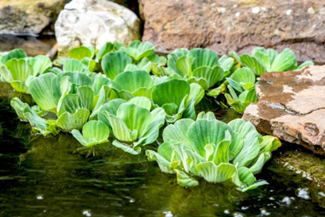
(TH)
Rowmari-Donduwa wetland and Laokhowa Wildlife Sanctuary:
-
- Context: Conservationists, wildlife officials, academics, and students have got together to push for the Ramsar site tag for two interconnected wetlands in central Assam’s Nagaon district.
- The Rowmari-Donduwa wetland complex is within the 70.13 sq. km Laokhowa Wildlife Sanctuary, which is a part of the Kaziranga Tiger Reserve.
- A Ramsar site is a wetland designated as one of international importance under the Ramsar Convention, an intergovernmental treaty signed in Ramsar, Iran in 1971.
- “Laokhowa and the adjoining Burhachapori Wildlife Sanctuaries function as connectivity corridors for wild animals migrating between the Kaziranga Tiger Reserve and Orang National Park (Kaziranga-Orang landscape).
- This complex has been recording more birds than the only two Ramsar sites in the northeast – Assam’s Deepor Beel and Manipur’s Loktak Lake.
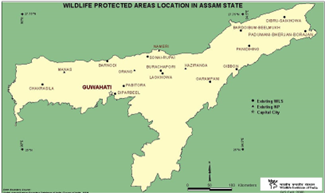
(TH)
Science & Technology
GSAT-7R:
-
- Context: ISRO launches GSAT-7R, India’s heaviest communication satellite.
- The Indian Space Research Organisation successfully launched the Indian Navy’s advanced communication satellite GSAT-7R (CMS-03) from the Satish Dhawan Space Centre in Sriharikota.
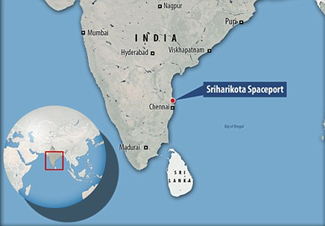
-
- The indigenously designed and developed satellite, weighing approximately 4,400 kg, is India’s heaviest communication satellite to date.
- ISRO launched the rocket aboard its most powerful launch vehicle, the LVM3, on its M5 mission.
- The satellite had been successfully inserted into a geosynchronous transfer orbit (GTO).
- GSAT-7R would provide robust and secure telecommunication coverage across the Indian Ocean Region.
- Its advanced payload features transponders supporting voice, data, and video links over multiple communication bands, ensuring seamless connectivity between the Navy’s ships, submarines, aircraft, and Maritime Operations Centres.
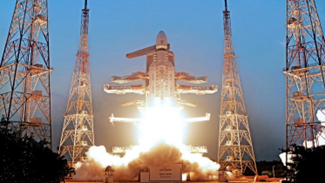
(TH)
LVM3, India’s biggest ever launch vehicle:
-
- The launch vehicle LVM3 (formerly known as GSLV Mk3) — India’s most powerful operational launcher.
- Its capacity is up to ~8,000 kg to low Earth orbit (LEO) and ~4,000 kg to geosynchronous transfer orbit (GTO) under typical conditions.
- To accommodate the heavier satellite, the insertion orbit is slightly lowered (apogee ~29,970 km instead of standard ~36,000 km) to stay within capability.
- It uses a three-stage combination: solid strap-on boosters (S200), liquid-fuel core (L110), and a cryogenic upper stage (C25).
- Future implications: the enhanced LVM3 will support larger missions including human spaceflight (Gaganyaan) and India’s own space station.
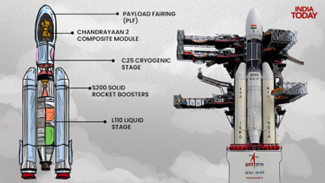
(IE)
Defence & Security
Trishul:
-
- The tri-services exercise Trishul will commence on 3rd November, with the Indian Navy leading the large-scale joint drills alongside the Indian Army and the Indian Air Force across the creek and desert sectors of Rajasthan and Gujarat, extending into the northern Arabian Sea.
- The 12-day exercise is being coordinated by the Western Naval Command.
- A key focus of Trishul, 2025, is on joint intelligence, surveillance and reconnaissance; electronic warfare; and cyberwarfare operations.
(TH)
Terms in news
‘Enshittification’:
-
- It describes the decay of online platforms through a three-stage process: a platform is good to users to attract them, then abuses users to benefit business customers, and finally abuses both users and business customers to maximize its own profits. Then, they die.
- Coined by Cory Doctorow (In 2022, the Canada-born author, tech journalist, and activist), the term identifies how platforms like Google and Amazon degrade over time by prioritizing shareholder value at the expense of the user experience.
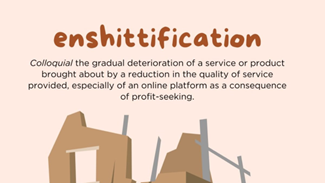
(TH)
Climate alarmism:
-
- It refers to the belief or portrayal that climate change will cause catastrophic or apocalyptic consequences, often expressed in an exaggerated or overly urgent manner.
- While climate change is a scientifically established and serious issue, climate alarmism is a term often used (sometimes pejoratively) to describe situations where:
- The threats are overstated or presented without nuance or scientific balance, and
- Fear or panic is used to motivate action, rather than evidence-based discussion or solutions.
(TH)
Important data/facts
Economy
Urea consumption:
-
- India’s consumption of urea (a nitrogen-fertiliser) is rising steeply, reaching ~8 million tonnes in 2024-25 and expected to hit ~40 million tonnes this fiscal.
- The price of urea has been unchanged (at about ₹5,360/tonne till 2012, ₹5,628 after neem‐coating) for over a decade, making it extremely cheap compared to other fertilisers—this fuels high demand.
- Domestic production has not kept pace: production peaked at about 31.4 mt in 2023-24, dipped to ~30.6 mt in 2024-25, and is dropping year on year in first half of 2025.
- Outlook & concerns: With demand likely to continue rising (more cropping area, irrigation, nitrogen-loving crops), and domestic capacity not expanding fast enough, the country may need ~4 new plants of ~1.3 mt each to plug supply gap or rely more on imports.
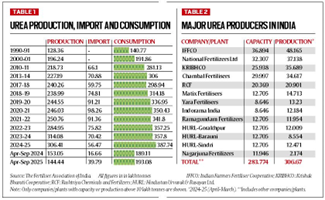
(IE)
Miscellaneous
Sports:
-
- Indian women at D.Y. Patil Stadium (Navi Mumbai, Maharashtra) on 2nd November 2025, wins the Women’s ODI World Cup defeating South Africa by 52 runs.

(TH)
PRACTICE MCQ’S
Q1. Consider the following statements regarding Urea in India:
1. Urea is the only fertiliser that remains under statutory price control in India.
2. All urea sold in India is mandatorily neem-coated to prevent its diversion for non-agricultural uses.
3. India is self-sufficient in urea production and does not import it.
Which of the statements given above is/are correct?
a) 1 only
b) 1 and 2 only
c) 2 and 3 only
d) 1, 2 and 3
Answer: B
Explanation:
- Urea is the only fertiliser under the Essential Commodities Act with a government-fixed MRP.
- Since 2015, neem-coating is mandatory for all urea produced or imported.
- India still imports urea to meet demand as domestic production lags consumption.
Q2. Which of the following statements is correct with reference to India’s Launch Vehicle Mark-3 (LVM3)?
a) It is India’s most powerful operational rocket, capable of launching up to 8,000 kg to Low Earth Orbit (LEO).
b) It is a two-stage rocket using only solid propulsion systems.
c) It has so far been used only for launching foreign payloads.
d) It cannot launch communication satellites heavier than 3,000 kg.
Answer: A
Explanation:
LVM3 (formerly GSLV Mk-III) is India’s most powerful three-stage rocket (solid + liquid + cryogenic) capable of launching ~8 tonnes to LEO and ~4 tonnes to GTO.
It recently launched the CMS-03/GSAT-7R, India’s heaviest communication satellite (~4,410 kg).
Q3. Consider the following statements regarding Invasive Alien Species:
Statement 1: Invasive species are non-native organisms that establish, spread rapidly, and cause ecological or economic harm to native ecosystems.
Statement 2: Introduction of invasive species occurs only through deliberate human activities such as agriculture and trade.
Which one of the following is correct?
a) Both Statement 1 and Statement 2 are correct
b) Both Statement 1 and Statement 2 are incorrect
c) Statement 1 is correct, but Statement 2 is incorrect
d) Statement 1 is incorrect, but Statement 2 is correct
Answer: C
Explanation:
Invasive species are non-native and cause harm to native biodiversity.
Their introduction can occur both deliberately and accidentally — e.g., via ballast water, trade, or transport.
Q4. Consider the following statements regarding Exercise Trishul:
1. Exercise Trishul is an annual bilateral naval exercise between India and France conducted in the Indian Ocean.
2. The exercise focuses primarily on anti-piracy and maritime security operations.
Which of the statements given above is/are correct?
a) 1 only
b) 2 only
c) Both 1 and 2
d) Neither 1 nor 2
Answer: D
Explanation:
Exercise Trishul is not a bilateral naval exercise; it is a tri-service (Army, Navy, Air Force) exercise of India’s Western Command, aimed at improving joint operational readiness and coordination, not limited to maritime operations.
Q5. Consider the following statements regarding Ramsar Sites in India:
1. Ramsar sites are designated only in marine coastal ecosystems.
2. India is among the countries with the largest number of Ramsar sites in Asia.
3. All Ramsar sites in India are located within protected areas such as national parks or wildlife sanctuaries.
How many of the above statements are correct?
a) Only one
b) Only two
c) All three
d) None
Answer: A
Explanation:
-
- Ramsar sites include both inland and coastal wetlands.
- India has one of the largest numbers of Ramsar sites in Asia (over 80).
- Not all Ramsar sites lie within protected areas; some are outside such boundaries.
Climate alarmism refers to the belief or portrayal that climate change will cause catastrophic or apocalyptic consequences, often expressed in an exaggerated or overly urgent manner.
While climate change is a scientifically established and serious issue, climate alarmism is a term often used (sometimes pejoratively) to describe situations where:
-
- The threats are overstated or presented without nuance or scientific balance, and
- Fear or panic is used to motivate action, rather than evidence-based discussion or solutions.
Spread the Word
The post Prelims Mantra – (03/11/2025) appeared first on Lukmaan IAS.